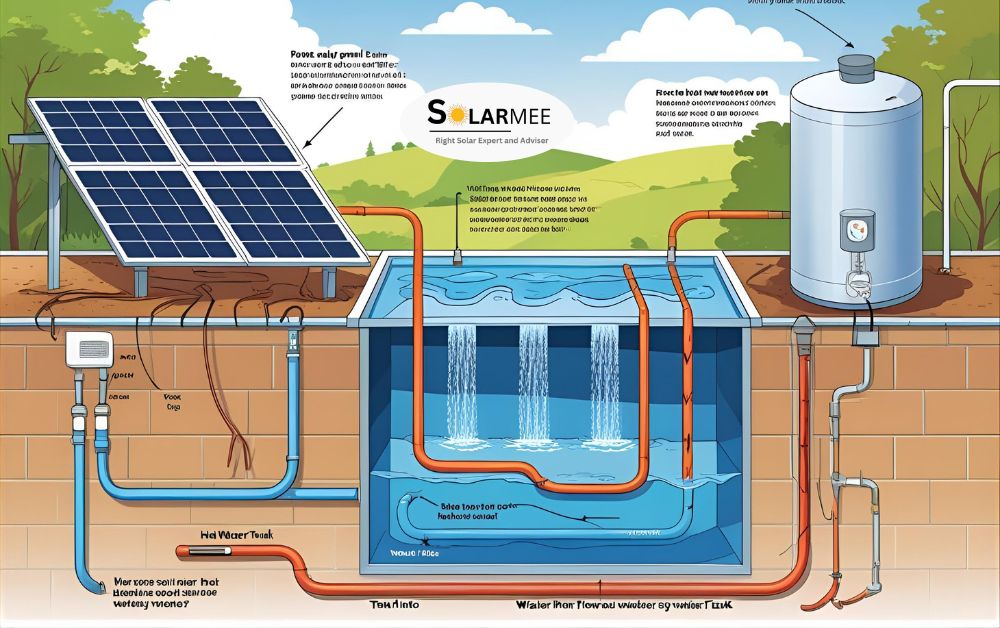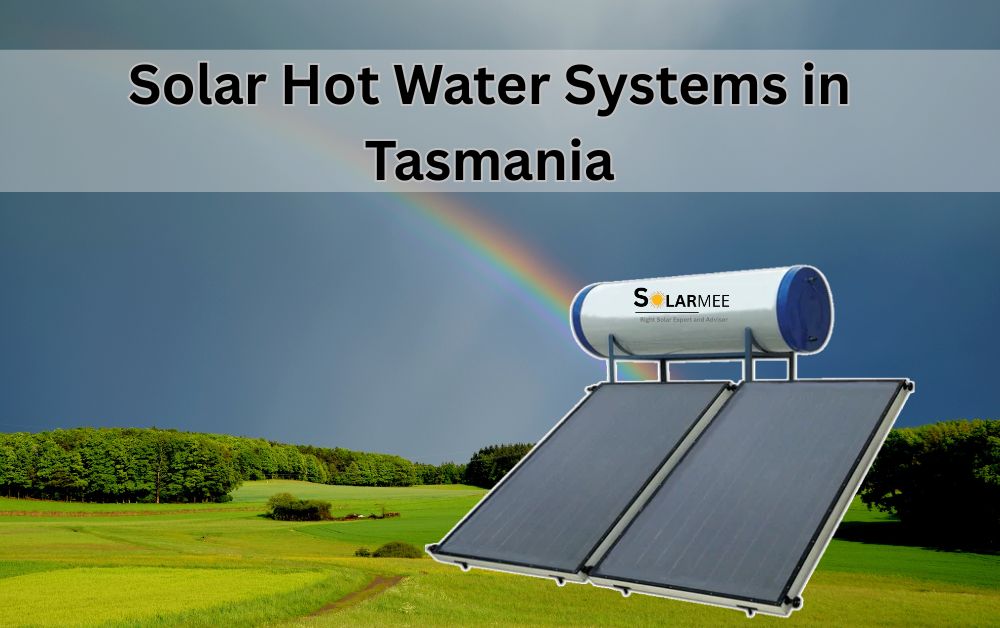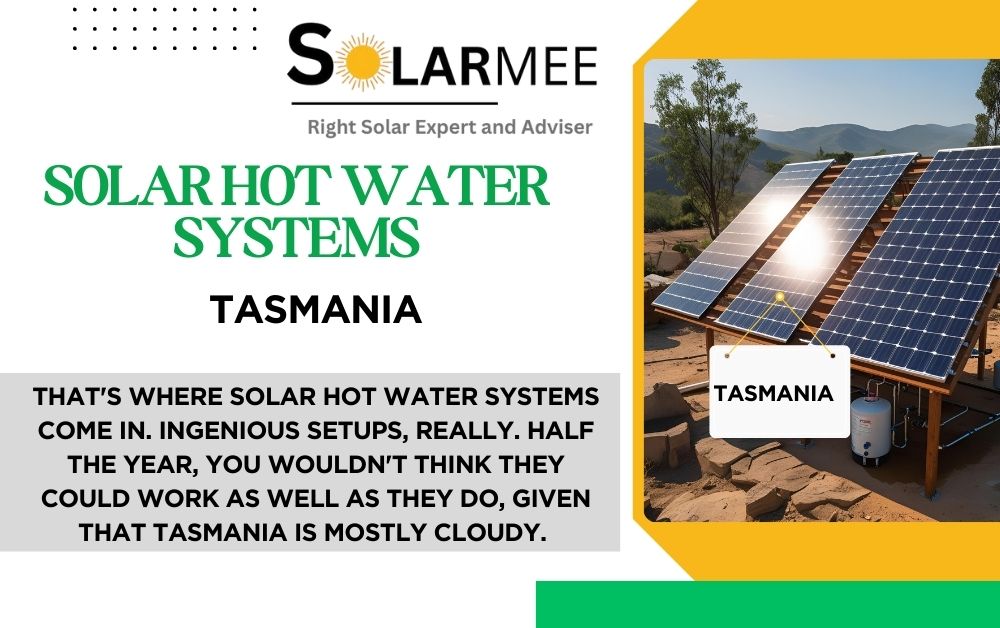Imagine you are wintering in Tasmania. You’re going outside just because you have to; it would have been unbearable for even a moment if you hadn’t put on five layers of clothing. This is the kind of weather that makes you appreciate hot water, not just any hot water, though it has to be the kind that’s perfectly at the right temperature and ready for use at any time of day. That’s where solar hot water systems come in. Ingenious setups, really. Half the year, you wouldn’t think they could work as well as they do, given that Tasmania is mostly cloudy.
The nicest aspect of them: Considering how much you are saving on your electric bills, they get far less expensive than you initially thought. As they do not release any of the toxic substances that conventional ovens do, you need not be concerned about any bad effects on the environment. The issue then becomes: Why would you not receive one, given that the government gives a rebate for their acquisition, that is, a modest reward for being so green?
This guide covers the costs, workings, pros, and cons of the systems, as well as the best models for homes in Tasmania. We will discuss all these matters so that the final choice is much less overwhelming.
What Are Solar Hot Water Systems?
Home solar water systems create hot water for your home using energy from the sun. They accumulate sunlight and convert it into heat. This warms water and keeps it in a tank. Electric or gas water heaters are not this way. They want grid-based electricity or fuel to generate heat. Those heaters don’t operate during a power outage. On the other hand, a solar hot water system not grid-dependent can run anytime there is adequate sunshine.
The two primary kinds are evacuated tube systems, which comprise glass tubes and flat plate collectors that look like flat panels, sturdy and basic. Which capture heat better than other technologies even in cloudy conditions? Like Tasmania, these systems are made to be effective in areas with sometimes chilly and unpredictable temperatures.
They are wonderful because of their energy efficiency; they help to reduce trash and save power. Using clean, renewable energy and refraining from burning planet-polluting fuels also qualifies them as environmentally friendly. Free energy from the sun, on a much larger scale for your shower or kitchen, may be thought of like using a solar charger for your phone. Solar hot water systems in Tasmania are increasingly helping low-bill, low-carbon lifestyles.
Also Read: Solar Hot Water Systems in NSW (New South Wales)

How Does a Solar Hot Water System Work?
Traveling first through collectors on the roof, a solar water heater system heats water for your house using sunshine. Although collectors come in many forms, flat panels absorbing sunlight and beaming that energy to a heat-transfer fluid passing through them are the most frequent. This not only heats the liquid (usually water) to near-boiling temperatures, but also warms the water in the storage tank. You can use this for washing laundry or taking showers.
The solar hot water system could not gather enough energy from the sun on a gloomy day in Tasmania. That is when the backup electric or gas heater could turn on to heat the water instead, guaranteeing you have a consistent supply of hot Even when the sun is not visible, water is available.
Solar hot water systems need electricity? Some of their parts, such as the pumps that move the fluid, could need a small amount of power. Still, the sun provides most of the heat; therefore, these systems largely spare consumers from having to purchase other sources of electricity.
Think of a Hobart home. On the days the sun shines, collectors heat water all day long on their roof.
On rainy days, a little electric backup turns on just enough to keep the hot water going. Over several years, the owners of this solar hot water system will have consumed far less energy from fossil fuels under Tasmania’s kind of sun-and-cloud weather.
Why Choose Solar Hot Water in Tasmania?
Tasmania is colder than most of Australia, but it has enough sunshine to run solar hot water systems. Cost reduction is among the main advantages. Heating water typically accounts for a large portion of the electrical cost; using solar hot water in Tasmania lowers such expenditures. Moreover, it benefits the environment as your non-renewable energy consumption will be reduced. That points to a lower carbon footprint and a cleaner tomorrow.
Energy independence is still another advantage. You could get free energy from the sun rather than depending just on grid power. To assist families to change, the Tasmanian government provides discounts and incentives to reduce the price of solar hot water systems.
Solar Hot Water Systems in Tasmania Cost
Initial costs for solar hot water systems in Tasmania can seem steep. However, many families here find the systems to be valuable over their lifetimes. The average system installation ranges from about $3,000 to $7,000, depending on the choice of system.
A few things affect the price: the kind of system (flat plate, evacuated tube, or heat pump), the scale of your household, and the availability of government rebates that help cut the cost. A small home, for example, would probably survive on a simple arrangement; a bigger family would want more expensive alternatives.
The yearly savings the systems offer on electricity are quite significant, even though the initial investment might look high at first. It is always possible to use solar energy to power your house, as it is a renewable source that is cheap and always available. Most of the time, this cheap method simply covers the amount of money you have already spent on your system installation.
Hence, solar hot water systems in Tasmania are still worth a long-term investment as their lower energy costs will eventually return the initial cost, which many would consider an expensive installation. They are not only a good investment from the point of view of the environment but also give you the advantage of living an eco-friendly lifestyle.

Best Solar Hot Water Systems in Tasmania
During the quest for the most excellent solar water heating systems in Tasmania, the climate should always be at the forefront of your mind. The state is much colder than a lot of other parts of Australia, hence the need for such systems that could still provide hot water in the absence of sunlight.
Besides, there are also some brand names that you may rely on and that are quite popular. Rinnai, Apricus, and Rheem are among such brands. Rinnai water heating systems are always commended for their durability and energy efficiency. Apricus, on the other hand, makes effective use of evacuated tube collectors.
These collectors are excellent at capturing and utilizing sunlight—even very cold sunlight—which makes Apricus a good choice for solar hot water in Tasmanian conditions. Rheem is also a strong option. Rheem’s appliances are made of high-quality materials, are covered by long-term warranties, and will not make you concerned with the occurrence of frequent breakdowns.
Pick the best solar hot water system in Tasmania based on the following attributes: efficiency, durability, warranty, and the company’s local support.
A wise suggestion is to assess various setups before making a purchase. Inquire about the public incentives taking place, analyze user reviews, and check that the configuration fits the dimensions of your house. You can enjoy a hot bath any time you want for the entire year, and also feel the joy of your energy bill getting lowered if you pick the right device.
Tips for Maintaining Your Solar Hot Water System
The maintenance of your solar water heating system isn’t difficult; however, it still requires some care and attention. The living parts – solar collectors and hot water tank – are in open places where they can catch dust and be harmed. Dirty panels or pipes can really mess with the system’s efficiency, so clean these surfaces of any obstructions.
Solar collectors and storage tanks are designed to take a beating and keep on functioning; however, I would still be on the lookout for potential leaks or incipient corrosion in the system.
Getting your system serviced by a professional every 2–3 years is a good idea. They can ensure the safety and smooth operation of the pump, valves, and insulation.
Above everything else, if you are in a very cold region, it is vital to ascertain that your winter frost protection is efficient.
Weird sounds, less hot water than usual, or an all-around sudden change in the function of your system are signs that you need a professional to come and give you a hand. Daft, or rather systematic upkeep, will make your service healthy throughout the year.
Also Read: Solar Hot Water Systems in Victoria
Conclusion
In Tasmania, switching to solar hot water is a smart choice indeed. It allows families to save a considerable amount on energy bills because, thanks to our laws of physics, sunlight cannot be charged for, and it also helps clear the kind of environmental pollution that damages our life support systems, which is much better for our health and future children.
Systems aren’t too expensive, either. With the government lending a financial hand and our local installers very much in evidence, this clean, solar investment is quite achievable for Tasmanians.





